The dedication for the rebuilding of the historic Meadow Gold sign in Tulsa was Friday morning. However, the real treat was to come later, when night would fall on 11th Street and Quaker Avenue, and the sign’s neon lighting would be revealed.
Here it is …
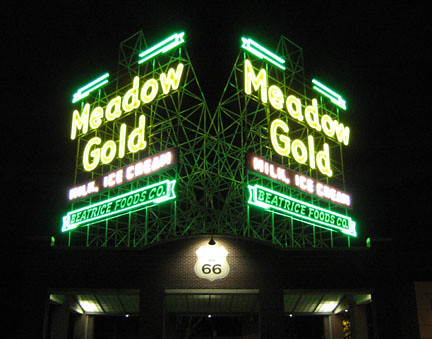
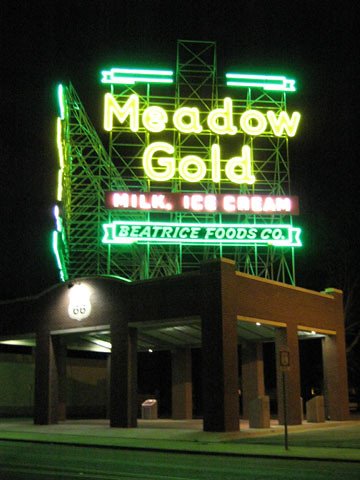
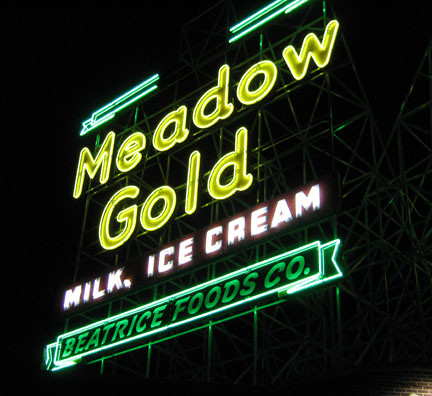
Here’s the view from the rear of the structure:
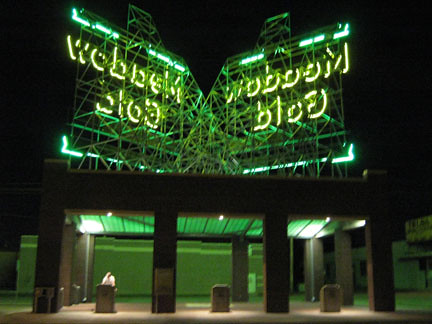
And here’s my approximate first view of the sign, from 11th Street about a quarter-mile away.
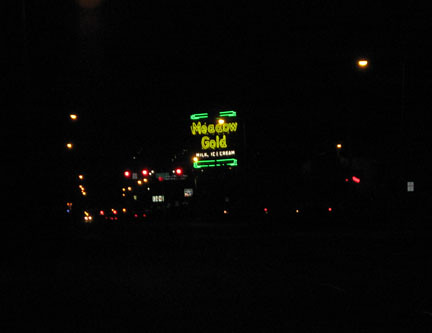
Of course, it’s not difficult to be impressed when you’re dealing with a sign that’s 30 feet tall.
About 50 people attended the midday dedication. Here’s what folks saw about 15 minutes before the ceremony:
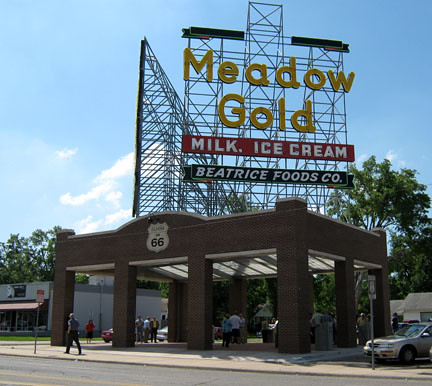
Here’s a closer look of one of the sides of the sign in the daytime. Note that the neon is already burning, although it’s hard to tell during daylight hours. It’s particularly noticeable on the green tubing.
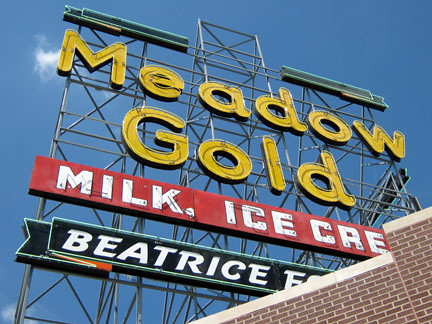
This is one of the five informational kiosks under the sign. On them is the history of neon signs, the Meadow Gold sign’s history, the history of the property, how the sign was saved, and history of Meadow Gold itself.

This is one of the informational plaques. They aren’t a final version. The plaques that were supposed to be used had some problems. So temporary plaques were made. They look good for stand-ins.
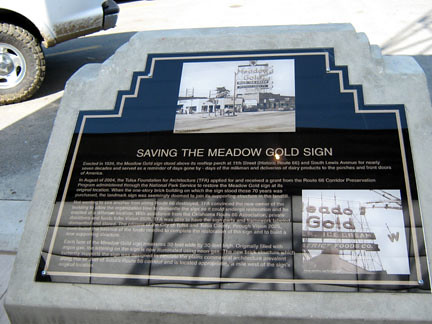
This is on the walkway below the sign.
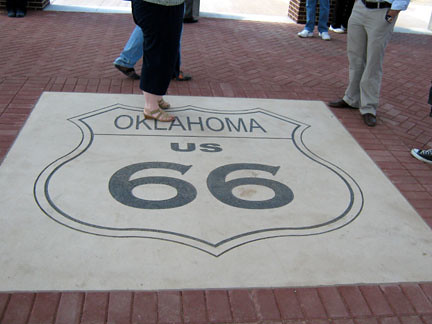
I forgot to shoot a photo of this, but a translucent canopy was built between the brick main structure and the sign. It serves, at the least, as a shelter during a rainstorm.
The ceremony itself contained a lot of gratitude to people who were responsible for getting a grant to restore the sign, then taking the initiative to move the sign from its original location at 11th Street and Lewis Avenue in 2004 when it was in imminent danger from the wrecking ball. The same parties kept getting mentioned:
- Lee Anne Zeigler at the Tulsa Foundation for Architecture
- Claude Neon Federal Signs
- The Route 66 Corridor Preservation Program
- Oklahoma Route 66 Association
- Route 66 advocates
- Mark Ferrell, who donated the land
- The Vision 2025 Route 66 Committee
- City of Tulsa Public Works Department
Zeigler passed along a few fascinating things in her remarks. First, people from 14 states made donations to help defray the costs of taking down the sign and putting it into storage until a new site could be found.
Second, Tulsa Foundation for Architecture recently completed an inventory of all Tulsa’s neon signs, and a database of these signs will be launched on TFA’s Web site sometime in June. To date, the number of neon signs in Tulsa totals more than 250. The site will offer a self-guided tour of the 10 best neon signs.
Kaisa Barthuli of the National Park Service’s Route 66 Corridor Preservation Program presented a plaque to Zeigler and TFA (shown below) and to the City of Tulsa.
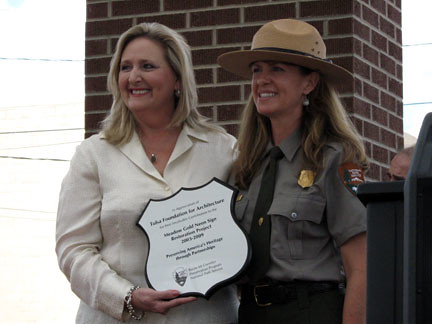
Barthuli’s speech contained one excerpt I thought was exceptional and explained why historic preservation such as the Meadow Gold sign is important. She gave me the text of the speech, and the excerpt is here:
“One might ask, ‘Why? Why go to this effort?’ And I think all of us here today know the answer to that … because it matters. It matters to our sense of identity and sense of place. It matters to the residents of Tulsa who voted for Viasion 2025 to restore their piece of Route 66 … their history … their sense of place. It matters to Route 66 travelers who will go to see it and appreciate the great lengths Tulsa has gone to return this unique and special part of our highway heritage back to the public.
“It also matters to the world. As some of you may know, the WMF listed Route 66 among the world’s most endangered places last year, along with other sites such as Machu Picchu and the cultural sites of Iraq. Route 66, and each and every property owner, large and small, matter to the world. Restoration of this sign makes our world literally a brighter place.”
Redforkhippie also posted her thoughts on the Meadow Gold’s relighting.
Absolutely beautiful! She’s right — it does matter.